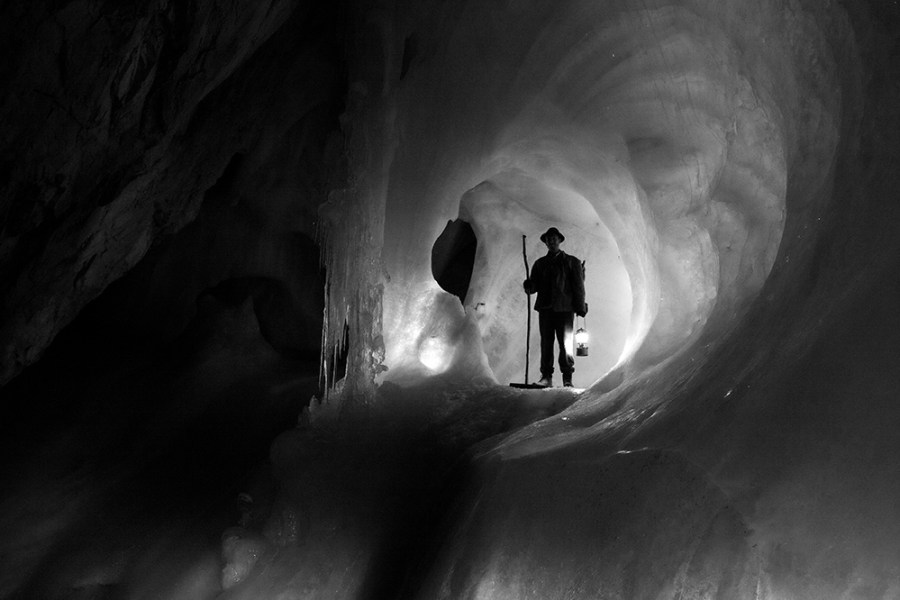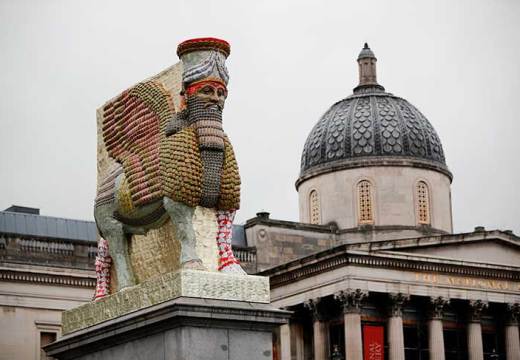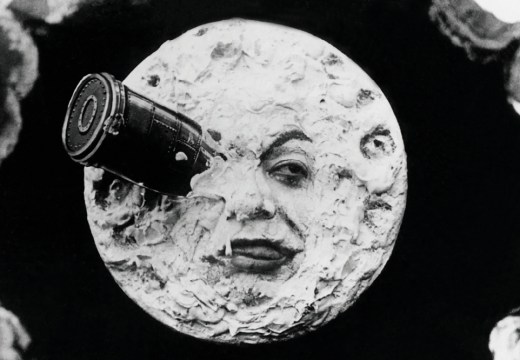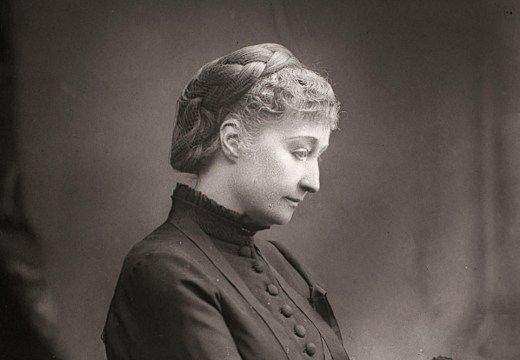When Fiona Tan left Australia to study art in Amsterdam in the late 1980s, she had never been to the Netherlands before. Nor had her father, who nevertheless knew a great deal about the country from having grown up in Dutch-ruled Indonesia. In Footsteps (2022), the film at the heart of a survey of Tan’s work at the Eye Filmmuseum in Amsterdam, this observant, understated artist introduces us to her observant, understated geologist father, to her early days in the city, to the early history of film, and to scenes of Dutch life from the first decades of the 20th century. If this sounds like a lot to take in, it doesn’t feel that way when you’re watching.
Throughout Footsteps, Tan lays the reading of letters written by her father to her in 1988–90 over a series of clips from silent Dutch films showing people at work in docks and in fields, travelling on boats or trains, playing games or posing for portraits. The scale of things is constantly changing: a single letter can move with no great shifts of tone from news of Soviet troop withdrawals to an earthquake in Armenia to the family cat’s visit to the vet. The silent footage, all from before 1920, has been sifted by Tan from the collections of the Eye Filmmuseum. Although black and white, the films were often hand-coloured and several have been souped up some more by the artist, so that it is no coincidence that scenes of water can have a blueish tinge and that fields are sometimes green or golden. If the effect is idyllic, it is knowingly so. As Tan has written, ‘This is Holland as it should be and yet never is or has been.’ And, as if to emphasise that we are entering something of a fairytale, to watch Footsteps you have to sit in a specially made screening room that looks like a red gabled hut on the outside.

Still from Footsteps (2022) by Fiona Tan. Courtesy the artist and Frith Street Gallery, London; © the artist
Just as the letters we hear prefer to describe rather than moralise, the film has no obvious message. In the pauses between the end of one letter and the next, Hugo Dijkstal’s sound design may insert some rippling of water or rustling of the wind, depending on the scene at hand, but it’s a very subtle affair. Footsteps is a deliberately contemplative film in the sense that Tan gives us time to think and allows our minds to wander.
The same spirit animates the rest of the exhibition, in which some of the quietest films are the most striking. Vertical Wide, Vertical Red, Vertical White (2018) is a three-screen view of the evening rush hour as it appears from the Getty Center high above. The minimalist soundtrack, composed by Tan herself, sets us apart from the reality of the honking below and the vantage point distances us from the frustrations of drivers whose cars have been turned into a series of flowing night lights.

Installation view of Inventory (2012) in ‘Fiona Tan, Mountains and Molehills’ at the Eye Filmmuseum in Amsterdam. Photo: Studio Hans Wilschut; courtesy Frith Street Gallery, London; © the artist
Inventory (2012) is another work that makes the viewer conscious of, well, watching. Filming with six cameras inside the Sir John Soane Museum, Tan seems to be making a visual catalogue of the contents of the hoarding architect’s house. In the same way that a visitor to the Soane Museum is aware of not catching every classical curio, of always missing some surface detail, the viewer of Tan’s six screens has choices to make.
Gray Glass (2020) is watchful in a different way. Named after a kind of mirror once made only in Italy and transported over the Alps by hikers, we follow a Caspar-David-Friedrichlike figure over the Hoher Sonnblick and descend with him into the Eisriesenwelt caves near Salzburg. Above ground we can still see him as a Romantic wanderer; under it, surrounded by limestone and ice, he is a representative of a more precarious age. The glaciation is undeniably beautiful, the black-and-white photography reminiscent of Herbert Ponting’s at the South Pole. But ice no longer seems permanent – and Fiona Tan can make us feel it.
‘Fiona Tan: Mountains and Molehills’ is at the Eye Filmmuseum, Amsterdam, until 8 January 2023.
Unlimited access from just $16 every 3 months
Subscribe to get unlimited and exclusive access to the top art stories, interviews and exhibition reviews.














![Masterpiece [Re]discovery 2022. Photo: Ben Fisher Photography, courtesy of Masterpiece London](http://www.apollo-magazine.com/wp-content/uploads/2022/07/MPL2022_4263.jpg)
It’s time for the government of London to return to its rightful home